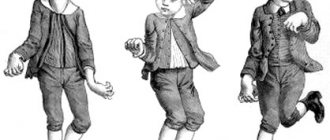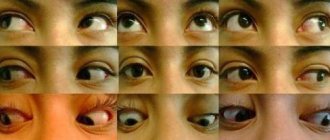What is Cognitive Behavioral Therapy (CBT)?
During their training, psychologists and psychotherapists learn different approaches to conducting psychoanalysis and further treating patients. These approaches include cognitive behavioral psychotherapy. What it is? Cognitive behavioral therapy is a psychotherapeutic method of treating a number of psychological diseases, with the help of which a psychotherapist helps patients get rid of not only the problems themselves, but also the causes of their occurrence. This technique is aimed at identifying negative patterns embedded in the subconscious, that is, habits and images that have a negative impact on the psyche.
❗️CBT is one of the main tools in psychology to help a patient distance himself from traumatic memories. The principle of operation of this technique is that the therapist helps to change a person’s negative thinking and direct his thought processes into a positive, constructive direction.
CBT psychotherapy differs from classical psychoanalysis in that it not only helps to identify negative patterns, but also to successfully overcome them. In order to achieve this goal, a cognitive behavioral therapist can use various tools: diaries, exercises, role-playing games, meditations, etc.
Thus, cognitive behavioral psychotherapy is a technique that allows you to identify and overcome destructive habits and thoughts, replacing them with constructive ones. Thanks to this, a person gets the opportunity to change his life, guided by an objective understanding of the world around him and himself.
The main concept of this technique is that overcoming negative thinking is the only way to a normal lifestyle. For example, if a person focuses his attention on car accidents, their consequences, and traffic accident mortality statistics, then he will most likely avoid using road transport. Naturally, this will negatively affect the quality of his life and the attitude of others towards the person. Therefore, overcoming negative thoughts and focusing on realizing your life goals is necessary in order to begin to lead an active lifestyle, socialize, and realize your own potential.
Methods of behavioral psychotherapy
Unlike other methods of treatment in psychiatry and psychology, methods of behavioral psychotherapy are based on fairly basic transformations of behavioral patterns. It is about eliminating undesirable behavior patterns and teaching the individual a new, more positive pattern. As a rule, such patterns are precisely those social frameworks, the absence of which is the cause of disturbances in the psyche or even behavior of the individual.
One such technique is aversion therapy. It is based on the use on the subject of various unpleasant or even traumatic stimuli for him, which in themselves prevent a dangerous or undesirable action for him. Nowadays, aversive therapy is recognized as a very dangerous method of treatment, since it largely affects the issue of the safety of the patient’s psyche.
Based on this, it is increasingly used as a “last resort” in cases where other methods are powerless in treating, say, advanced stages of alcohol or drug addiction. But even in such cases, the method is rarely used as a separate technique of psychological treatment, and must be combined with other techniques.
This is due to the fact that aversive therapy is more “suppressive” in nature, essentially blocking a certain negative pattern of behavior, but along with the blocking, the replacement of the blocked pattern of behavior with a new positive one should always follow.
You can also often hear about the “token” system of behavior therapy. It is based to a much greater extent on the development of a certain habit by the patient, his banal upbringing. The meaning of the token system is that an individual, performing a certain positive action within the framework of the required pattern instilled in him, receives a symbolic “reward”.
As a rule, the reward can be tokens, points, and other figurative units. The patient can accumulate them in order to later exchange them for some things he needs or just pleasant things. This technique is in many ways reminiscent of developing a habit or even a reflex, and is very often used as part of re-education in places of deprivation of liberty and prisons.
Of course, there are many other methods that differ in their effectiveness in certain conditions, complexity, requirements for the patient and even the level of danger for him. These include training in self-control, self-reinforcement techniques, a fining system, fostering self-esteem and a sense of self-importance.
go to top
Who developed the method of cognitive therapy?
People have been thinking about what controls a person’s thoughts and actions since ancient times. The great thinkers and philosophers of the Roman Empire (Epictetus, Seneca, Cicero) were the first to come to the conclusion that mental anxieties and psychological illnesses arise due to incorrect psychological attitudes, subjective understanding of the world and delusions. Later, similar statements were voiced by philosophers Francis Bacon and Benedict Spinoza.
By studying the work of these thinkers and conducting his own research, American psychotherapist Aaron Beck developed the cognitive branch of psychology. He became the creator of a fundamentally new method of psychotherapy, which made it possible to solve many problems and begin to treat a number of psychological diseases.
❯❯❯ American psychotherapist Aaron Beck
Aaron Beck's research was based on the observation that people with a certain mindset are more likely than others to develop psycho-emotional illnesses. This meant that the thoughts and feelings that people with negative thinking had had a negative impact on their behavior, health and life in general. Therefore, the CBT technique was aimed at changing thinking.
According to the work of Aaron Beck, the goals of cognitive behavioral therapy are to:
- Solve problems that provoke the occurrence of mental disorders;
- Reduce or completely eliminate the symptoms of the disease;
- Reduce the likelihood of recurrence of the disease;
- Increase the effectiveness of drug treatment.
In this case, the main goal is to eliminate the causes of mental disorders, namely destructive thoughts, ideas and images that distort the perception of the world and human behavioral reactions. Essentially, a psychotherapist, using the CBT technique, teaches the patient not to try to control everything that happens around him, but to control only his actions and his perception of the world.
To conduct behavioral therapy and counseling, the following skills are required: 1) to break behavior into fragments, that is, to operationalize it; 2) conduct a functional analysis to clarify the background of the problem, resulting behavior and consequences; 3) determine, together with the client, goals that are socially acceptable; 4) use special behavior change procedures. The most commonly used techniques are:
1.Relaxation.
Behavioral psychologists consider it more effective not to search for the causes of physical tension, which can manifest itself in the form of insomnia, stiffness, high blood pressure, but to teach the client the mechanism of relaxation. Relaxation programs are usually based on techniques: a) tension-relaxation contrast. In the first stage, the client takes several deep breaths in and out with his eyes closed. On the second, the client is asked to alternately tense or relax different muscle groups until he feels the differences in these states. In the third, the client is asked to remember the difference between a tense and relaxed state in order to understand what muscle tension is. The fourth stage is devoted to the procedure of contrast compression - relaxation of muscle groups in a certain order to achieve relaxation. The fifth stage is related to the completion of the exercise; b) direct relaxation. In this case, the client simply relaxes muscle groups one by one. With this technique, the relationship between the psychologist and the client is especially important.
2. Systematic desensitization (or reduction of anxiety).
This technique, developed by J. Volpe, is aimed at solving problems associated with anxiety and tension. It includes several stages: a) teaching the client the technique of deep muscle relaxation according to Jacobson; b) drawing up a hierarchy of situations that cause fear. To establish the starting and ending points, the most terrible situation is assigned 100 points, the state of absolute peace - 0 points; c) passing the fear scale from the bottom to the top in a state of deep muscle relaxation. In this case, the client learns to visualize all his fears in a state of relaxation.
3. Implosion (flood).
The technique is similar to systematic desensitization, but is performed without muscle relaxation. After drawing up the hierarchy of fears, they move on to implosion - the presentation of situations of fear. Based on the client’s behavior (motor activity, muscle tension, facial expressions), the psychologist assesses the intensity of the fear experienced and the degree of involvement of the client. The psychologist's task is to maintain a high level of fear for approximately 40 - 45 minutes.
4. Paradoxical intention (desire).
According to this technique, proposed by V. Frankl, the client is asked to stop fighting the symptom and, on the contrary, try to deliberately cause and intensify it. The method consists not only of turning your fear around, but also of having a humorous attitude towards it.
5.Modeling.
Using this technique involves demonstrating the desired behavior. The psychologist himself can show the client how to behave calmly in frightening situations (for example, how to kill spiders), or use a video recording.
Types of Cognitive Behavioral Therapy
There are a number of specific types of therapeutic approaches that include CBT:
✔️ Cognitive therapy. Focuses on identifying and changing inaccurate or distorted patterns of thinking, emotional reactions and behavior.
✔️ Dialectical behavioral therapy (DBT). Aimed at correcting behavioral reactions and thinking. It is implemented using different strategies, including the strategy of regulating the emotional background.
✔️ Multimodal therapy. Based on the assertion that patient treatment should be based on the management of related modalities: affect, images, interpersonal factors, behavioral reactions, sensations, cognitive abilities and biological factors.
✔️ Rational emotional behavioral therapy. It is carried out in stages. First, negative psycho-emotional attitudes are identified. Then they are challenged, and a person learns to independently identify and transform them.
Rational therapy in psychology is currently one of the most effective treatment methods. It is based on the fact that certain feelings and thoughts that arise in a person strengthen his subjective judgments.
This, in turn, leads to behavioral disorders that negatively affect all areas of life. Therefore, rational therapy is carried out over many sessions. During treatment the patient:
- Identifies feelings, thoughts and situations that provoke him to maladaptive behavior;
- Practices new skills with which he can cope with those feelings, thoughts and situations that provoke him to maladaptive behavior;
- Sets goals and objectives, learns to plan his actions and objectively assess his capabilities;
- Solves problems by identifying them step by step, finding solutions and choosing the most appropriate solution;
- Learns self-control and self-diagnosis by keeping a diary or using other tools.
Regardless of what types of CBT the therapist uses in treatment, the patient must be prepared for the fact that the effect of therapy will not occur immediately. During the treatment process, a person gradually moves towards recovery, gradually overcoming his problems and changing as a person. In fact, the main goal, i.e. recovery is achieved through the implementation of smaller goals: searching for a problem, recognizing it, identifying the causes and eradicating them, transforming thinking. This method of psychotherapy is good because realizing small goals is not as scary as trying to solve complex problems without prior preparation.
It should also be taken into account that CBT is not suitable for treating all patients. Some people are not ready for long-term and regular treatment, during which the therapist acts as an instructor. Thus, people who are not ready to admit that some of their feelings, thoughts and desires are abnormal have difficulty accepting the changes that occur during therapy.
Explanatory note
The cognitive direction in psychotherapy appeared in the sixties of the twentieth century. The founders of this direction were Aron Beck and Albert Ellis, who worked independently of each other, but came to similar results. The behavioral direction appeared earlier and developed under the influence of the theorists of behaviorism. Reports on individual cases of successful use of behavioral psychotherapy were published back in the mid-twenties of the last century, but Joseph Wolpe, who was the first to systematically develop and apply this approach, is deservedly considered the founder of this direction. Wolpe considered himself a follower of I.P. Pavlov, and in the early forties he reproduced Pavlov’s experiments in order to better understand his ideas. Subsequently, the cognitive and behavioral directions began to converge, both theoretically and practically. A. Beck began to use not only cognitive, but also behavioral methods, and J. Volpe believed that he was using cognitive ones. It turned out that there are no fundamental contradictions between their views, and behavioral and cognitive methods complement each other. Their common theoretical basis is the idea of the connection between thinking, emotions and behavior and the possibilities of therapeutic intervention based on these connections.
Gradually, a unified cognitive-behavioral direction in psychotherapy emerged. Various psychotherapists of this direction place emphasis in their work on behavioral or cognitive methods, or a combination of both. In Russian literature, another translation of the same name is sometimes found - “Thought-behavioral therapy.” We will stick to the term “cognitive behavioral therapy,” which indicates a historical connection with behaviorism. For brevity, we will also use the abbreviation KBT. Various therapists in this area give the methods they developed, essentially cognitive-behavioral, special names. This is what Albert Ellis called his method “Rational-Emotive Behavior Therapy.” Aron Beck used the term “cognitive therapy” to mean the use of both cognitive and behavioral methods. Lazarus and Meichenbaum, also major representatives of this trend, proposed their own names for their systems. Other important exponents of cognitive behavioral therapy include Judith Beck, Ryan Mc Mullin and Robert Leahy.
In terms of the number of practicing therapists and its practical significance, cognitive behavioral therapy is comparable to psychoanalysis. These two directions have long been competitors and irreconcilable opponents. Since the mid-eighties of the twentieth century, a strong tendency has emerged in world psychotherapy to combine ideas from various directions - the so-called integrative approach; it has become possible to combine psychoanalytic, cognitive, behavioral and other methods in the work of a psychotherapist. It should be noted here that A. Beck and A. Ellis were first certified psychoanalysts, and psychoanalysis played a role in shaping their views.
Cognitive-behavioral therapy is one of the leading areas of world psychotherapy. The therapeutic value of this direction and its wide possibilities are confirmed by extensive practice and are generally recognized. CBT is rich in theoretical ideas, has significant integrative potential, and can be used to help a wide range of disorders, including acute disorders. All this makes a course in CBT necessary for training a psychotherapist and psychological consultant.
Course objectives:
- Theoretical training of a specialist in the field of cognitive behavioral therapy.
- Development of elements of practical skills of working as a specialist in cognitive therapy.
Course objectives:
- To provide the student with professional knowledge of the theoretical concepts and ideas of cognitive and behavioral therapy.
- Provide professional knowledge of the main types of practical therapeutic methods used in cognitive and behavioral therapy.
- Give the listener the opportunity to master the methods of professional thinking developed in CBT.
- Give the listener an idea of the therapeutic process in CBT: its phases, general tactics, specific tasks of each stage.
- In practical classes, give the student the opportunity to gain personal experience of using and undergoing cognitive therapy.
In this course, cognitive methods are presented from the perspective of A. Beck, and behavioral methods are taken from both J. Wolpe and other researchers.
The course emphasizes cognitive methods. They form its theoretical core. Behavioral techniques and methods of working with children's experiences are also given serious attention. The main feature of the author's concept of the course is the presence of a large number of examples taken from practice. Each theoretical concept is illustrated with a specific example - a case from therapeutic practice. The application of each technique is also illustrated with a specific case of its application.
The assignments for students also use specific cases - from a methodological point of view, the assignments consist of applying the acquired theoretical knowledge to analyze specific cases.
Indications for use
CBT is used to treat a wide range of conditions:
- Personality disorders (paranoid, schizoid, hysterical, etc.);
- Bipolar disorder (so-called “emotional swing”);
- Alcohol, drug, gaming and other addictions;
- Feelings of unreasonable anxiety, stress and depression;
- Eating disorders, i.e. anorexia and bulimia;
- Anger problems;
- Panic attacks;
- Phobia.
It should be noted that cognitive behavioral therapy for mental disorders is not the only and fail-safe method of treatment. It is usually combined with drug therapy and physiotherapeutic procedures. In this case, the goal of therapy is to help the patient overcome mental disorder and related problems, focus on his recovery, thoughts, feelings, and perception of the world.
CBT is a treatment technique in which the therapist plays a large role. In this case, the importance of the participation of the patient and the doctor in treatment is the same, since they jointly set the goals of therapy and jointly make efforts to achieve them. Moreover, the therapist’s task is to explain to the person the essence of the task assigned to him.
In psychotherapy, the CBT technique is popular among both doctors and patients. There are many reasons for this.
▪️ Firstly, awareness and acceptance of the problem is one way or another necessary to solve it and prevent relapses.
▪️ Secondly, CBT gives a noticeable effect in a relatively short time and can be used as a treatment technique without the use of drug therapy.
▪️ Thirdly, numerous studies have shown that among all existing methods of psychotherapy, CTP is one of the most effective, accessible and universal.
And, finally, in the process of such therapy, people acquire skills that subsequently help them to successfully socialize and solve most of the psycho-emotional problems that arise on their own. The only caveat is that the person must actively participate in the treatment process and be ready for change.
Carolina Korableva
About the author: Hello! I am Karolina Korableva. I live in the Moscow region, in the city of Odintsovo. I love life and people. I try to be realistic and optimistic in life. What I value in people is their ability to behave. I am interested in psychology, in particular conflictology. Graduated from RGSU, Faculty of Occupational Psychology and Special Psychology.
Course content
Section one. History of origin and main principles of cognitive therapy
Topic 1. The emergence and main theoretical principles of CBT.
Founders of cognitive therapy. The relationship between emotions, thinking and behavior from a CBT perspective. Schechter and Singer experiment.
Topic 2. Automatic thoughts and their role in organizing behavior and assessing the situation.
Automatic thoughts, their properties, their effects and phenomenology. Their difference from other types of client material. Their influence on emotions and behavior.
Section two. Methods for working with automatic thoughts.
Topic 3. Methods for identifying automatic thoughts.
Difficulties in identifying them and ways to overcome them.
Topic 4. Critical assessment and modification of automatic thoughts.
Socratic questions. Cognitive distortions. Adaptive response to dysfunctional automatic thought.
Section four. Cognitive conceptualization.
Topic 5. Cognitive conceptualization as a method of understanding a client case in CBT.
Diagram of a client case, its main components.
Topic 6. Basic beliefs.
The relationship between automatic thoughts and core beliefs. Main groups of basic beliefs.
Topic 7. Intermediate (compensatory) beliefs and compensatory behavior strategies in the theory of A. Beck.
Topic8. Methods for identifying basic and intermediate beliefs.
Topic 9. Therapeutic work with dysfunctional beliefs.
Methods of working with basic and intermediate beliefs.
Section five. Process of therapy in CBT
Topic 10. The main stages of working with a client and related problems.
Conceptualization of client and therapist difficulties.
Topic 11. Didactic component of CBT.
Diary of automatic thoughts. Homework at different stages of work in CBT.
Section six. Relevant (formative) experience.
Topic 12. The role of relevant experience in the formation of dysfunctional beliefs.
Therapeutic work with relevant (formative) experiences in CBT. Types of resynthesis. The role of cognitive case conceptualization in dealing with relevant formative experiences.
Section seven. Behavioral therapy
Topic 13. Behavioral methods in CBT.
The experiments of I.P. Pavlov and their historical role in the formation of behavioral therapy. Founders of behaviorism and behavior therapy.
Method of systematic desensitization in behavioral therapy. Its varieties. Modeling and method of reinforcement control in behavior therapy.












